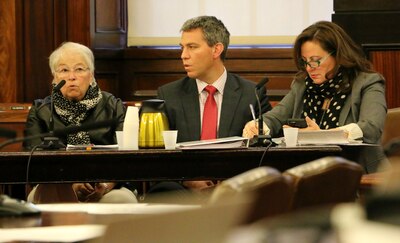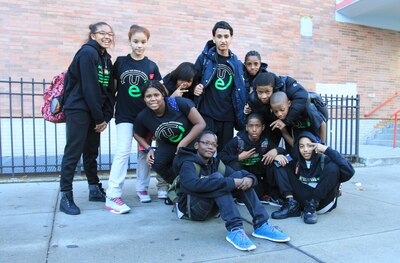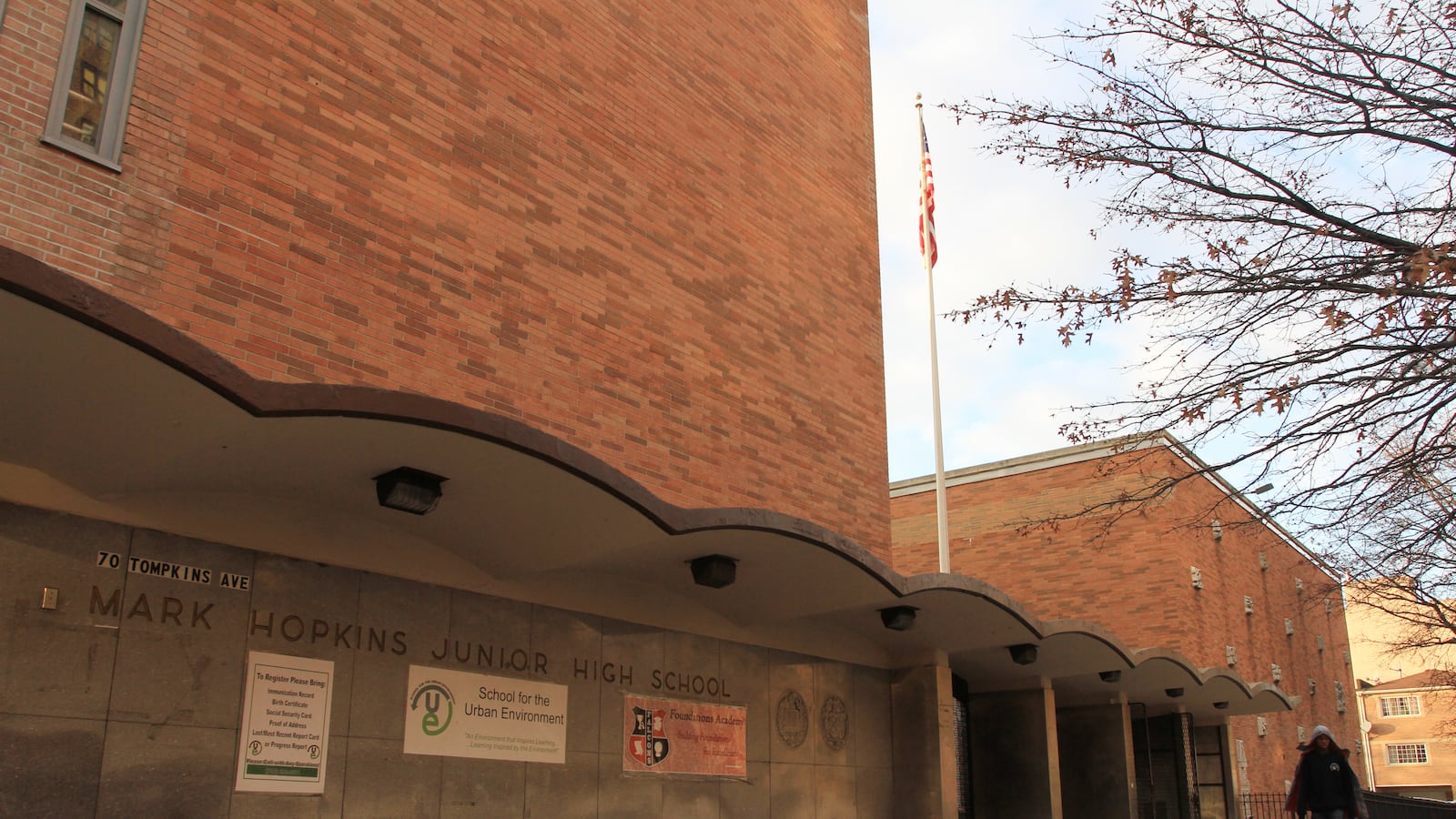Citing poor performance and low enrollment, the city education department said Monday that it would move to close three small schools at the end of this school year — a turning point for the de Blasio administration, which launched a high-profile program last year meant to spare troubled schools from closure.
The schools include Peace Academy Middle School and The School for the Urban Environment, which each serve fewer than 60 students — making them the city’s lowest-enrolled middle schools. The third is Foundations Academy, a high school with just 113 students and the city’s fourth-lowest graduation rate.
Officials said the schools struggled to attract and keep students, which led to such severe funding shortfalls that the city had to supplement their budgets just so they could provide basic courses like math and English. The schools also posted very low test scores — only 2 percent of Peace Academy students passed last year’s state English tests, while none at Urban Environment passed — and they suffered from high teacher turnover, officials said.
“Closing a school is always a difficult decision,” Chancellor Carmen Fariña said in a statement, adding that she is “committed to holding all our schools accountable to meeting the needs of our students.”
Two of the schools, which are all located in Bedford-Stuyvesant, Brooklyn, are part of the city’s nearly $400 million “Renewal” program, which Mayor Bill de Blasio launched last year to revamp the city’s lowest-performing schools. Earlier this month, a top state education official said the city should “pull the plug” on some of the schools in that program, and on Monday, the state’s education commissioner endorsed the city’s decision to close the three schools.
The city’s plans came as a shock to some parents and their children who attend the schools, especially those that are part of the three-year Renewal program, which is in its second year.
Ronald Johnson, whose daughter is a junior at Foundations Academy, said he wished the city would give the school more time to improve. He noted that it made some recent gains: Its graduation increased 10 points to 32 percent last school year, though that is still far below the city average.
He also worried about how his daughter, who has a disability, would adjust to a new setting during her final year of high school.
“It’s just not right,” he said.

The previous administration closed more than 150 schools, sparking emotional protests by parents and educators and drawing sharp criticism from many elected officials, including then-Public Advocate Bill de Blasio. Last month, a study of 29 schools closed in the first half of former Mayor Michael Bloomberg’s tenure concluded that the policy did not harm students at the shuttered schools and benefitted later students who were forced to enroll elsewhere.
While those schools were “phased out” over a period of years, the current administration plans to shut down the three schools after this academic year. Unlike many of the large struggling high schools closed under Bloomberg, which had long histories and devoted alumni and community backers, these schools all opened within the last decade and are unlikely to rally the same level of support to fight their closures.
When de Blasio launched the three-year Renewal program last fall, he said it marked a reversal of his predecessor’s practice of rushing to close troubled schools without making a serious effort to fix them. Yet he also made a point of leaving closure on the table as a “last resort.”
Lately, Fariña has stressed that some schools could be shuttered even before the end of the Renewal three-year program, which is now in its second year. The city has faced persistent pressure to do so, both from critics who are skeptical of the improvement program and from state officials who have insisted that some schools are beyond repair. Board of Regents Chancellor Merryl Tisch said earlier this month that the city should “pull the plug” on its worst-off schools rather than permit “persistent failure.”
David Bloomfield, an education professor at Brooklyn College and the CUNY Graduate Center, said that even if the city had been considering closing the three schools for some time, the timing of the announcement gave the impression that it was in response to the recent controversy.
“The timing so soon after a firestorm over struggling schools makes it seem as if the announcement might have been politically driven,” he said.
Still, Fariña has repeatedly said that she believes schools with very few students are unsustainable because they cannot afford to offer a wide enough array of classes and services, since funding is tied to enrollment. But, until now, she has moved to combine such schools with their neighbors rather than close them.
Michael Mulgrew, the head of the city teachers union, said Fariña called him over the weekend to brief him on the closure plans. She made it clear that the overriding factor in her decision was the schools’ size, he said.
“The chancellor to me was like, this is literally about the enrollment numbers,” he said. “They are so small.”
Mulgrew’s union, the United Federation of Teachers, bitterly opposed schools closures under Bloomberg and occasionally sued to block them. But he said de Blasio’s proposed closures were different, because they were being proposed for the practical reasons of enrollment and funding rather than as a consequence for low performance.
“I don’t like when schools get closed,” he said, “but I understand that sometimes it has to be done.”
The announcement did not appease critics who say the city should shut down more of its lowest-ranked schools, rather than flood them with extra resources. Jeremiah Kittredge, CEO of Families for Excellent Schools, a pro-charter school advocacy group that has attacked de Blasio’s Renewal program, said the proposed closures still would leave “tens of thousands trapped in schools that are just as dysfunctional as these three.”
State education officials have also suggested that some chronically low-performing schools should be shut down. In a statement Monday, state education department Commissioner MaryEllen Elia said she supported Fariña’s plan.
“Sometimes, even with New York City’s thoughtful and aggressive improvement strategy, hard choices have to be made,” she said. “The Chancellor’s decision to close these schools wasn’t easy, but it was right.”

The city took steps to shut down two poor-performing charter schools last year, but this administration has not previously moved to close any traditional schools.
As public advocate, one of de Blasio’s main critiques of Bloomberg’s closure strategy is that the city only involved parents late in the process after the decision to close had been made.
City officials said Monday that parents at the three schools had received an automated call about the plans before the public announcement, but several students said they learned about it that morning. Mulgrew, the union president, said he believed teachers also were first informed Monday.
Officials said that students would receive letters to bring home that afternoon, and families would receive emails and another automated call. The city will hold public forums at each of the schools this month before winter break, and formal hearings at the schools in February. The city’s Panel for Educational Policy is expected to vote on the proposed closures at its February meeting.
The education department promised to help the schools’ 24 total teachers find new placements. Those who fail to find new jobs by next fall will enter the city’s unplaced-teacher reserve, where they will earn full salaries and take temporary assignments while looking for permanent placements.
The department also said that counselors would assist each student in choosing a new school for next year. The middle school students will have a guaranteed seat at another school in their district, while the high school students will be able to choose from schools across the city.
On Monday, many students were still reeling from the news.
Justin Arroyo, a sixth-grader at The School for the Urban Environment, left an after-school program that afternoon with a group of friends wearing shirts with the school’s navy blue-and-green logo. He said everyone at the tiny school knows each other.
“Now we’re all getting split up,” he said. “It’s really unfair.”
Stephanie Snyder contributed reporting.
Need an easy way to stay up on New York City schools news, but don’t want email overload? Sign up for our Friday newsletter here.

